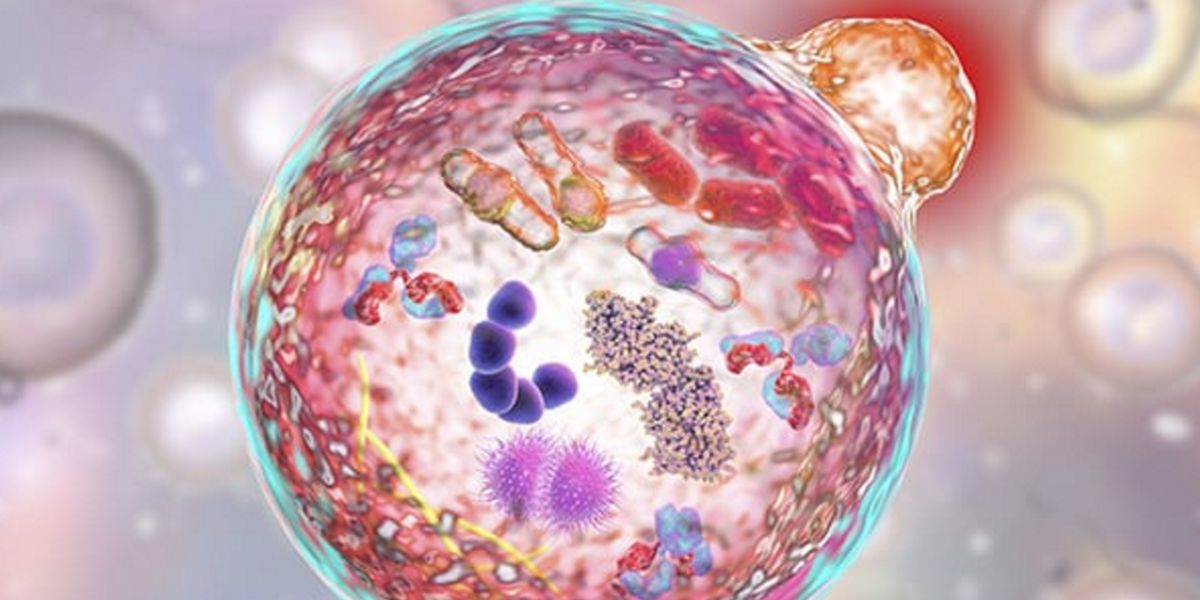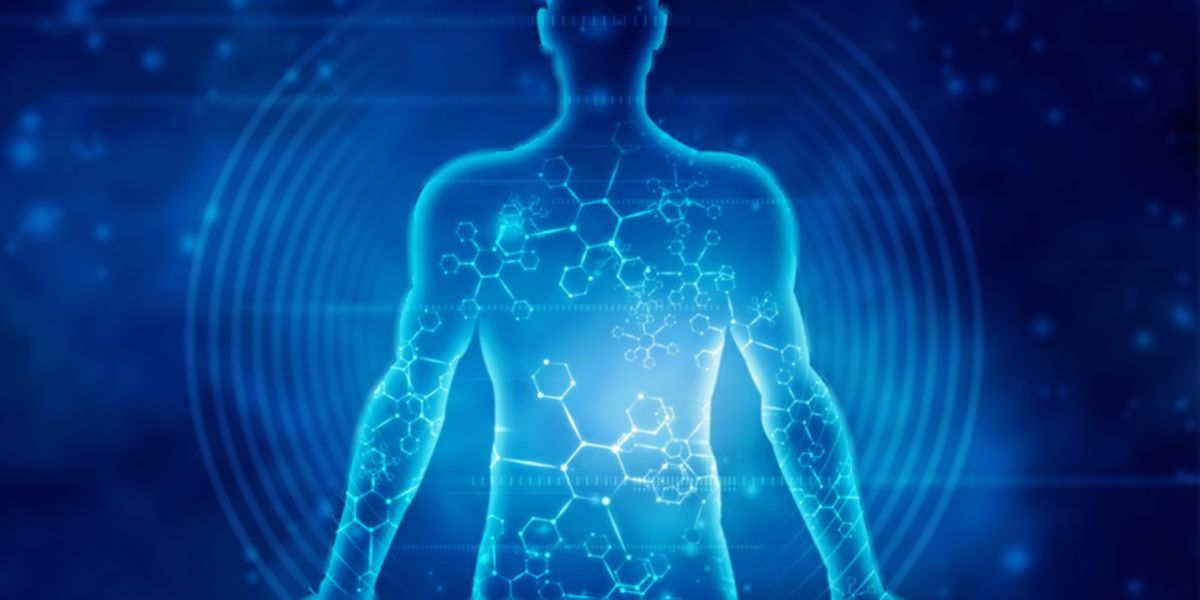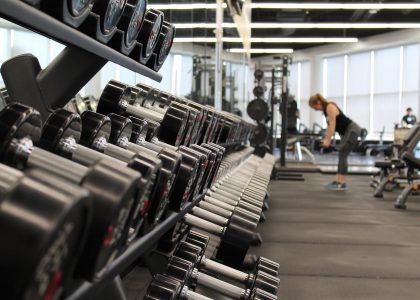What is the relationship between exercise and autophagy? Is exercise more powerful and effective than intermittent fasting to improve autophagy?
Coping with aging
Aging involves a series of molecular and cellular changes, which are ultimately a direct consequence of the physiological decline that all we experience sooner or later.
This inevitable decline makes us uncomfortable.
Culturally, we don’t accept aging and death . A perspective not shared by many other cultures.

In recent years, the tendency to praise all that is “antiaging” has been growing.
Aesthetic procedures of all kinds, physical therapies, more grotesque diets and other techniques with more than questionable evidence.
But if there’s one word that has gained momentum and is being used as a champion of the anti-aging movement, it’s: autophagy.
What is autophagy?
L ‘ autophagy is an omnipresent cellular process (present in most cells) and necessary for life .
That is, without autophagy we would not be alive or would last a few years.
This already warns us about the rumors we see constantly in the networks: “This cancels autophagy” ; “This other maximizes autophagy” …
Autophagy is better understood with similarities, because trying to understand it at the molecular level is rather complicated even for experts in the field.

It is a process of cellular recycling of what is not needed.
We have already talked in this blog about Autophagy , in particular, the relationship that exists with the IF or Intermittent Fasting . We recommend that you take a look at this article.
A simile to better understand
- At home you obviously generate garbage.
- Garbage that you have to do something with (throw it away), because otherwise it will accumulate.
- A little accumulated garbage does not cause any problems.
- However, as the amount of garbage grows, the functionality of the rest of the house decreases.
- In other words, that garbage (non-functional part of the house) is starting to interfere with the functionality of the rest of the healthy structures in your home (everything that is not junk).
On a cellular level
The same thing happens in the cell.
The cell is a living organism, continuously working for a larger system. This work, in addition to requiring energy, generates waste .

But a healthy cell has its mechanisms to get rid of this waste.
In cellular terms, residues are misfolded and non-functioning proteins, organelles or remnants of them that are of little use and other molecules that hinder it more than contributing to proper functioning.
What are autophagosomes?
All this useless mess is encased in membranes that form the so-called autophagosomes .
Imagine a shopping bag with trash inside. Well, we’re talking about something like this.
To take out the trash, we have a very original way of doing it: there are organelles called lysosomes , loaded with content acid, which fuse with autophagosomes, pouring the acid content into them.
This is the wonderful way the cell must ” throw the trash “.
That said, healthy autophagy (this is the cell’s default mode) will take care of maintaining cell function for as long as possible.

Types of Autophagy
I said earlier that understanding autophagy was not easy. Although we refer to it with a unique term, in reality autophagy is divided into:
- Macroautophagy
- Microautophagy
- Autophagy mediated by a companion
Limited autophagy will lead to premature aging and reduced functionality.
The question is: can we interfere or change the autophagy process?
Aging and exercise physical
As we have said, at the cellular level, aging is characterized by an accumulation of misfolded proteins and deteriorated cell organelles which increase the risk of cell death and alteration of homeostasis in the body.

physical exercise is defined according to Caspersen as planned, structured and regular physical activity carried out with the aim of improve fitness . It has been present throughout evolution and has shaped our physiology , as I will never tire of explaining.
Exercise Deficit
Lack of exercise is showing unhealthy aging.
We are experiencing the paradox that, despite living longer, we are getting older and older. This can only be reversed through exercise.
But our society sees exercise over 50 as unnecessary or even dangerous.

I would say that after 50 years it is even more necessary!
We tend to make elderly people fragile , to treat them as if they were made of glass, and that can only make them fragile.
Curious, but in most antiaging clinics exercise is relegated to the background, when in reality it is the only well-tested anti-aging intervention .
And, of course, we can’t talk about anti-aging effects on the body without mentioning its effect on the nervous system.
Neuroprotective effects of exercise
In mice the neuroprotective effects of exercise are many:
-
- Increase in neurogenesis
- Less loss of dopaminergic neurons
- Greater antioxidant capacity
Greater AUTOPHAGIA.
Intermittent Fasting or Exercises to Empower Autophagy?
Everyone talks about intermittent fasting for maximizing autophagy and stopping aging, but what if I told you exercise maximizes it even more?
8 weeks of treadmill roulant in mice significantly increase the Beclin 1 protein related to autophagy levels (Andreotti et al., 2020).
What does the cell need to stimulate autophagy? A sign of energy deficit.
The cell starts “recycling” defective cellular elements when it needs energy , or feels that we may soon find ourselves in a situation of high energy demand.

Perhaps the key to understanding the concept here is the term “cellular recycling”.
The cell does not waste waste, reuses to give rise to other functional structures.
Amino acids, for example, from a defective protein can be used to create a fully functional one.
And how does the cell know that we are in an energy deficit situation?
ATP / AMP ratio
By reducing the ATP / AMP ratio in the cell with exercise, the famous protein kinase AMPK is activated.
- When the cell activates the AMPK , it activates a program that tries at all costs to generate energy . The kettles ( mitochondria ) of the cell will be turned on (oxidative metabolism).
- AMPK also inhibits mTOR: this situation, active AMPK and inactive mTOR, increases autophagy-related proteins (which also occurs during fasting).
The target? The same: to obtain energy and structural resources so that the cell can move forward.
Type of exercise for greater autophagy
The type of exercise we perform will result in greater or lesser activation of autophagy and it is expected that exercise cardiovascular , which generates a greater energy expenditure, activates more autophagy processes of strength exercise.

Which does not mean that this the latter has no impact on autophagy.
Furthermore, we know from animal studies ( in humans studying autophagy is not easy , for many different reasons ) that exercise:
-
- Increase the amount of lysosomes (those acid-laden bags that are been used to disintegrate non-functional elements)
Improves mitochondrial dynamics and mitophagy (mitochondria must also be “recycled” when the time comes)
-
- Increase other autophagy-related proteins
If you want to know more about the benefits of cardiovascular exercise , visit this post.
Conclusions
Everyone talks about intermittent fasting to maximize autophagy.
This is not unreasonable, as fasting for a certain number of hours generates cellular adaptations that promote the famous cellular recycling .
What we don’t know is to what extent this happens. Neither do we know from what time the potentiation of autophagy occurs , nor from which moment it stabilizes.
We do not know if animal studies with intermittent fasting are applicable to humans.
We don’t know much yet.
What we do know is that exercise generates the same adaptations as intermittent fasting on many levels, and that part of the “antiaging” benefits it provides are linked to cellular processes such as autophagy.
Definitely a fantastic field to investigate in the next decade.
We’ll keep you posted. A big hug and keep getting stronger!






